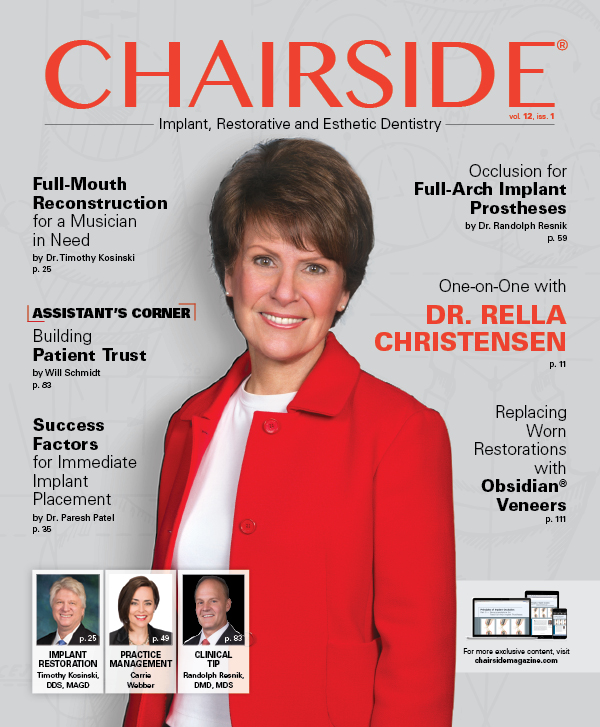Clinical Tip for Esthetic Dentistry: Ideal Surface Treatment for Bonding Zirconia Veneers

Although the esthetics and translucency of dental veneers have been advancing for some time, many doctors have requested increased strength and durability. Now that veneers can be fabricated from BruxZir® Anterior Solid Zirconia, clinicians have an option that is both strong and esthetic. With an average flexural strength of 650 MPa, BruxZir Anterior veneers offer superior durability as well as a lifelike appearance well-suited for the anterior region of the mouth.
For dentists interested in utilizing BruxZir Anterior for patients requiring veneers, the ideal bonding protocol has become a topic of great interest. Prior to bonding a BruxZir Anterior veneer to a prepared tooth, various internal surface treatments can be applied to the restoration to increase the strength of the bond. In a recent in vitro study, three distinct surface treatments were used in conjunction with three of the most popular cements for luting zirconia to the tooth surface. The resultant bond strength of the nine test groups was measured to determine the most effective bonding protocol.
For dentists interested in utilizing BruxZir Anterior for patients requiring veneers, the ideal bonding protocol has become a topic of great interest.
Study Methodology
The tooth specimens used in the study were extracted human molars, with the roots sectioned at the cementoenamel junction and the crown sectioned buccolingually. Ten tooth specimens were included for each combination of surface treatment and cement for a total of 90 samples. The flat enamel surface of each tooth specimen was etched with phosphoric acid (35 percent H3PO4) and thoroughly cleaned with pressurized water for 15 seconds.
A BruxZir Anterior Solid Zirconia cylinder was designed, milled and sintered for each specimen. The three different surface treatments applied to the internal surfaces of the BruxZir Anterior cylinders included sandblasting (50 µm of alumina at 90 psi for 10 seconds), abrasion with Rocatec™ Soft (3M™ ESPE™; St. Paul, Minn.) (30 µm of silica at 90 psi for 10 seconds), and application of a new experimental silica gel solution.
The three luting agents included in the study were Multilink® Automix (Ivoclar Vivadent; Amerherst, N.Y.), Panavia™ F 2.0 (Kuraray Dental; New York, N.Y.), and Variolink® Esthetic (Ivoclar Vivadent). The enamel and ceramic surfaces were treated, primed and luted according to manufacturer instructions for each cement. All margins were light-cured for 20 seconds. The specimens were stored in deionized water for 24 hours at 37 degrees Celsius.
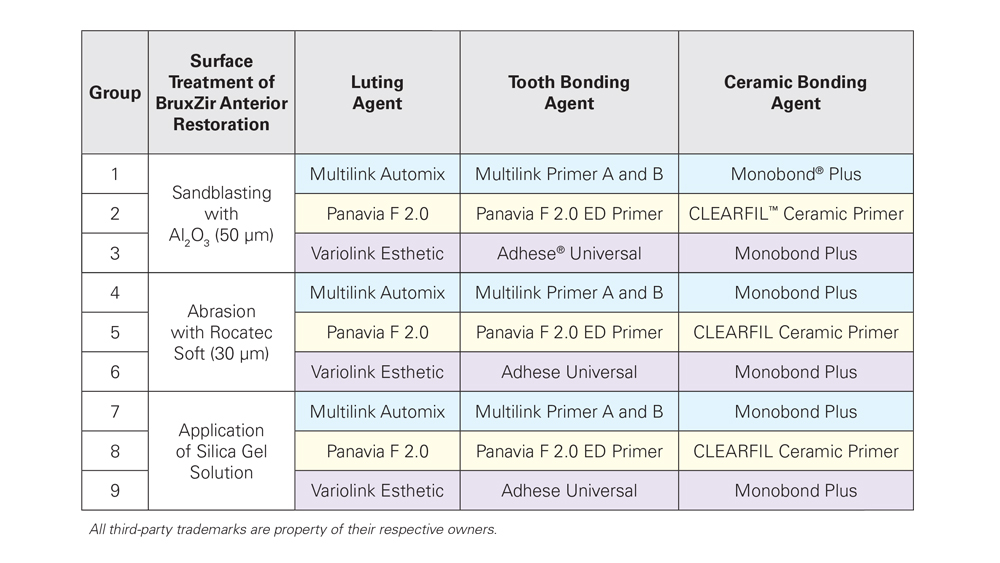
After cementing the 10 BruxZir Anterior cylinders to the tooth preparations for each test group, the specimens were placed in an Instron® Model 5564 testing machine (Instron; Norwood, Mass.) with a load cell of 2,000 N. Shear force was applied at a constant speed of 1 mm per minute until debonding occurred.
Results
The force (N) and stress (MPa) value at the time of debonding was recorded, and means and standard deviations of the failure load were calculated for each test group. The one-way analysis of variance (ANOVA) showed a p-value of less than 0.05 (α = .008), indicating a significant difference among the groups depending on the surface treatment applied. When using Multilink Automix or Variolink Esthetic, the BruxZir Anterior samples abraded with Rocatec Soft tolerated the most stress prior to debonding. However, when averaging the results for the three luting agents included in the study, sandblasting the restoration surface with alumina achieved the highest bond strength.

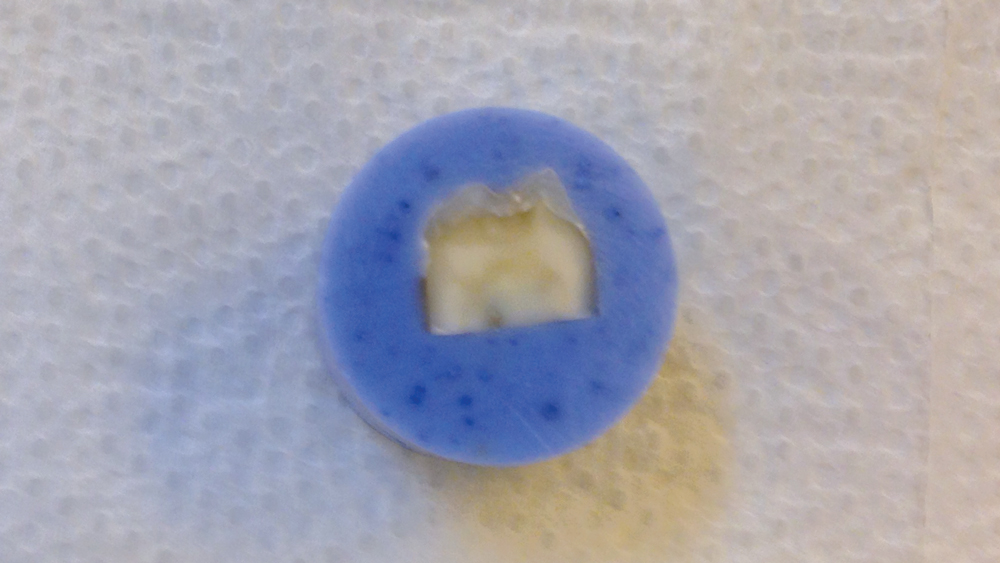
Tooth surface preparation
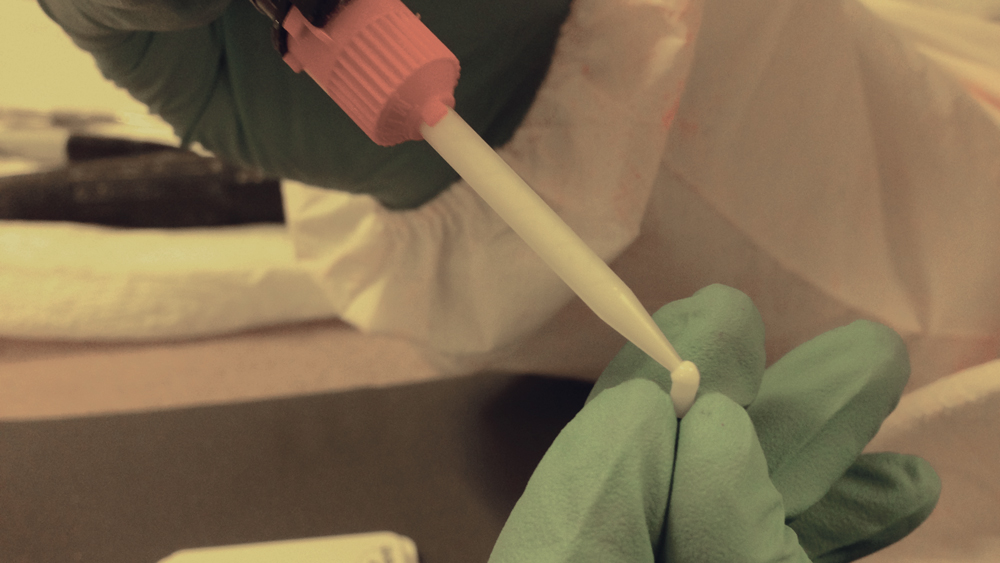
Cement application

Bond strength testing
Conclusion
Due to their superior strength and favorable esthetics, BruxZir Anterior Solid Zirconia veneers are an appealing new option in restorative dentistry. For clinicians concerned about the ideal bonding protocol for delivering a monolithic zirconia veneer, our results indicate that applying surface treatments to the veneer prior to delivery can enable a durable bond.
When used in conjunction with three of the most popular cements for bonding zirconia to the tooth surface, sandblasting the internal surface with alumina resulted in the highest average bond strength. Based on this research, Glidewell Laboratories sandblasts the internal surface of each BruxZir Anterior veneer before the case is shipped to the doctor. By utilizing Multilink Automix, Panavia F 2.0 or Variolink Esthetic and closely following manufacturer instructions, clinicians can deliver these monolithic zirconia veneers with a high degree of confidence in the resultant bond strength.
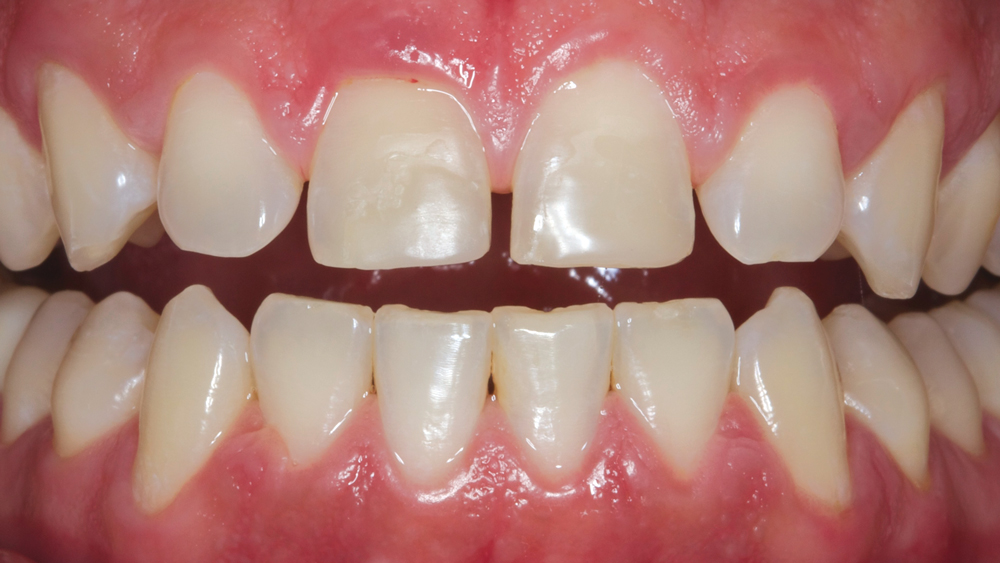
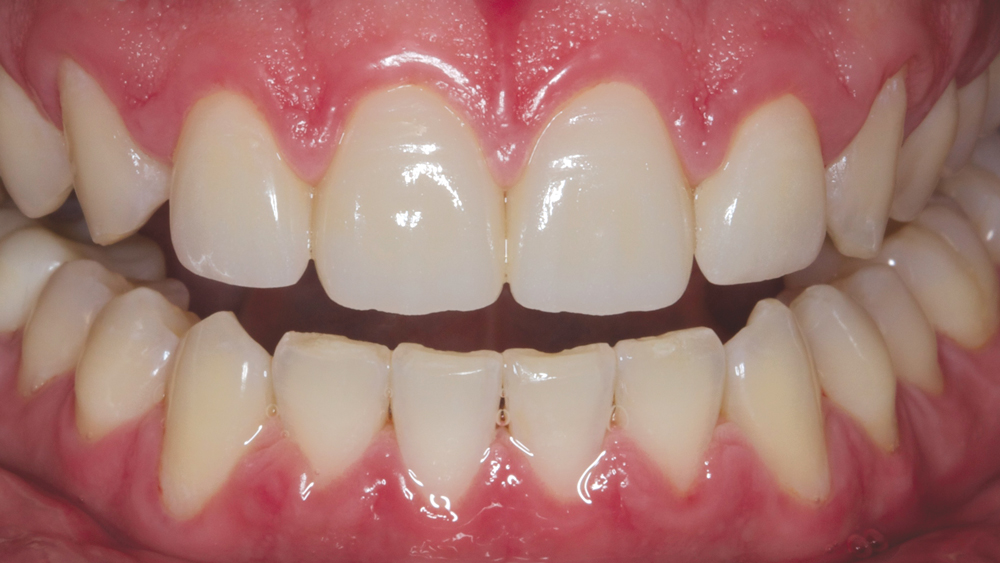
Clinical case example of patient who presented with a chief complaint of spaces between teeth #7–10. To achieve diastema closure, Variolink Esthetic was used to bond the sandblasted internal surfaces of four BruxZir Anterior veneers to the prepared enamel surfaces of the teeth, resulting in excellent bond strength.
– Clinical dentistry courtesy of Anamaria Muresan, DMD, ME, CDT

